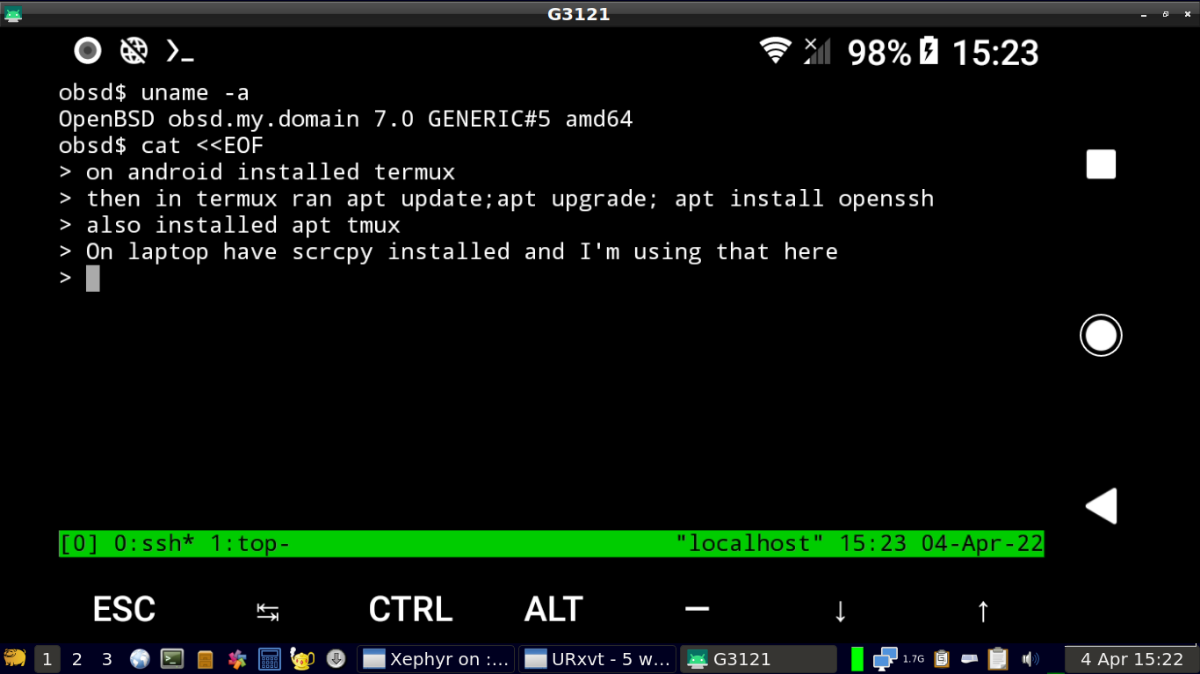Jon wrote: Mon Dec 06, 2021 4:25 pm
But it isn't even installable from the package manager? Is there a proper man-pages package to install? Because I did try that too and it didn't seem to work either. Also I would be pretty astounded if there is no way to get the man pages to work normally. Man pages are not useless and they are much more efficiently viewed from the terminal... I mean... Most things are more efficiently done through the terminal... Anyway... Any help is greatly appreciated. I am ultimately looking for a good base system for network administration and distro repair and even windows rescue that I suppose also has the versatility to basically work as a daily driver. If there is another distro that is already good for this, that would be great. Although I am kind of trying to put one together that is tailored to my needs, so ultimately I was looking at making my own... what is it called... A, umm... Puplet?
Thnks,
-Jonathan
OpenBSD consider errors in man pages to be bugs, same as software bugs i.e. incorrect documentation could result in incorrect configuration that led to problems. So their man pages are updated to match the release they're associated-to/included-in.
Puppy strips out/excludes man and even localisations - to minimise on space/size.
Might be considered as two extreme opposites.
If there is another distro that is already good for this, that would be great.
Why settle for one. I boot Fatdog as a hypervisor and system/data manager, within that I boot a container that uses the same image as the main system Fatdog - as my daily desktop, but that's resilient to hacks. Uses the same Fatdog image that's already loaded into ram so is quick to start and needs hardly any additional resources. I kvm/qemu boot openbsd as a guest system, I tend to just stick with the base system for that, very secure, used for html/ssh/etc. (httpd/sshd/etc) servers and cli based, where kvm is almost like having another CPU (can even be set to emulate having more cores/memory than you actually have, but that does slow its response times down, so I just set '-cpu host' as that's the most responsive choice). I'm now also using scrcpy, and have installed termux on my android phone, so also have that available (I find it a lot easier to type sms's using the laptop keyboard/mouse). I tend to ssh into hashbang for mail, irc, etc. .. again cli/tmux/curses based, handy to have another system that is always on that you can connect-to/disconnect-from and it continues running in the background, that you can even re-connect to from a different device/location. I set up another X on Ctrl-Alt-F5 (normal X is on Ctrl-Alt-F4), setting the resolution for that to 640x480, within which I run syncterm for connecting/browsing old style BBS's. All on the same relatively old 2 core, 4GB ram laptop and the temperature/CPU when idle is very low and uses around 1.5GB/ram
Image is of Fatdog with scrcpy running to see my phone - which is running tmux within termux, within which I've ssh into my OpenBSD session.

- xscreenshot-20220404T152232.png (153.12 KiB) Viewed 1567 times
Jump to hashbang to read mail/irc ... ctrl-alt-F2
Want to DuckDuck something, or send a sms, flip to main Fatdog select the Xephyr container ... where chrome, libre office ...etc. are available, as is scrcpy (phone).
Chat/play on a BBS, ctrl-alt-F5
Man pages, flip over to OpenBSD and man ... whatever. Or next port of call, chrome/internet (or Fatdog's own help pages).
At home, wifi connected. Out and about, phones data allowance with the laptop tethered. A good dog of a 'system' that works well for me.